PXE自动化部署Linux
胖胖的Linux之路 人气:0背景说明
在数据中心,一次几十台甚至几百台服务器上线,系统安装将变得非常麻烦,系统安装好了,还会涉及很多配置,工作量都非常大。很多虚拟化平台如VMware,FusionCompute等安装一般通过ISO逐台安装,或者通过厂商工具来安装,比较麻烦。
PXE is Pre-Boot Execution Environment # 预启动的执行环境
PXE 通过网卡引导的技术
1.BISO支持
2.网卡支持
3.需要在BIOS中开启;服务器BMC界面打开
部署一台服务器,在服务器上安装DHCP+tftp (DHCP提供动态获取IP)
网卡DCHP获取信息
DHCP除了分配ip地址 还能提供引导程序的名字和tftp的server的地址
引导程序加载到内存,根据配置文件来引导
思路:
配置yum源
关闭防火墙和selinux
安装dhcp,tftp-server,htppd,syslinux包
配置dhcp,tftp-server,并启动服务
安装system-config-kickstart包,并生成ks无人值守脚本
配置引导菜单
配置DHCP
挂载光盘
mount /dev/cdrom /media
配置yum源
. `vim dvd.repo [development] #定义后期选包 name=centos baseurl=file:///media gpgcheck=0 enabled=1`
编辑DHCP文件(动态主机配置协议)
cp /usr/share/doc/dhcp-4.2.5/dhcpd.conf.example /etc/dhcp/dhcpd.conf #拷贝模板,覆盖掉conf文件
vim /etc/dhcp/dhcpd.conf #全局配置和子配置二选一,
全局配置 # option definitions common to all supported networks...
7 option domain-name "example.org";
8 option domain-name-servers ns1.example.org, ns2.example.org;
9
10 default-lease-time 600;
11 max-lease-time 7200;
12 next-server 192.168.100.10; #指定tftpserver在哪里
13 filename "/pxelinux.0"; #网络引导程序文件
# 子配置 A slightly different configuration for an internal subnet.
47 #子网配置
48 subnet 192.168.100.0 netmask 255.255.255.0 {
49 range 192.168.100.11 192.168.100.30; #DHCP地址池的范围
50 option domain-name-servers 192.168.100.2; #DNS地址 (可以设置)
51 option domain-name "example.com"; #域名地址
52 option routers 192.168.100.1; #网关地址
53 option broadcast-address 192.168.100.255; #广播地址
54 default-lease-time 600; #租约期 获取到的ip存活多长时间
55 max-lease-time 7200; #租约期到期,在的话就还可以用,不在自动回收
56 }
tftp配置
[root@pxeserver ~]# vim /etc/xinetd.d/tftp
# default: off
# description: The tftp server serves files using the trivial file transfer \
# protocol. The tftp protocol is often used to boot diskless \
# workstations, download configuration files to network-aware printers, \
# and to start the installation process for some operating systems.
service tftp
{
socket_type = dgram
protocol = udp
wait = yes
user = root
server = /usr/sbin/in.tftpd
server_args = -s /var/lib/tftpboot
disable = no ##yes修改为no
per_source = 11
cps = 100 2
flags = IPv4
}
syslinux配置
yum provides "*/pxelinux.0" ##查找此文件属于那个软件包 yum install -y syslinux #安装syslinux cp /usr/share/syslinux/pxelinux.0 /var/lib/tftpboot/ #复制pxelinux.0文件到tftp根目录下面 mkdir -p /var/lib/tftpboot/pxelinux.cfg #安放default配置文件 cp /media/isolinux/isolinux.cfg /var/lib/tftpboot/pxelinux.cfg/default ##开机文件cp到pxeLinux.cfg目录下 cp /media/isolinux/* /var/lib/tftpboot/ #cp安放iso文件,default来读取(安装菜单会显示) 此时还没有系统 配置default文件 menu separator # insert an empty line menu separator # insert an empty line label linux menu label ^Install CentOS 7.5 #菜单目录 kernel vmlinuz #内核文件 append initrd=initrd.img ks=http://192.168.100.10/ks/ks.cfg
配置httpd
yum install -y httpd systemctl start httpd systemctl enable httpd mkdir -p /var/www/html/centos cp -rfv /media/* /var/www/html/centos/ [root@pxe-server ~]# cat /etc/yum.repos.d/dvd.repo [development] #定义后期选包 name=centos baseurl=http://192.168.100.10/centos gpgcheck=0 enabled=1
配置无人值守
yum install -y system-config-kickstart system-config-kickstart #启动
ks.cfg文件具体配置如下:
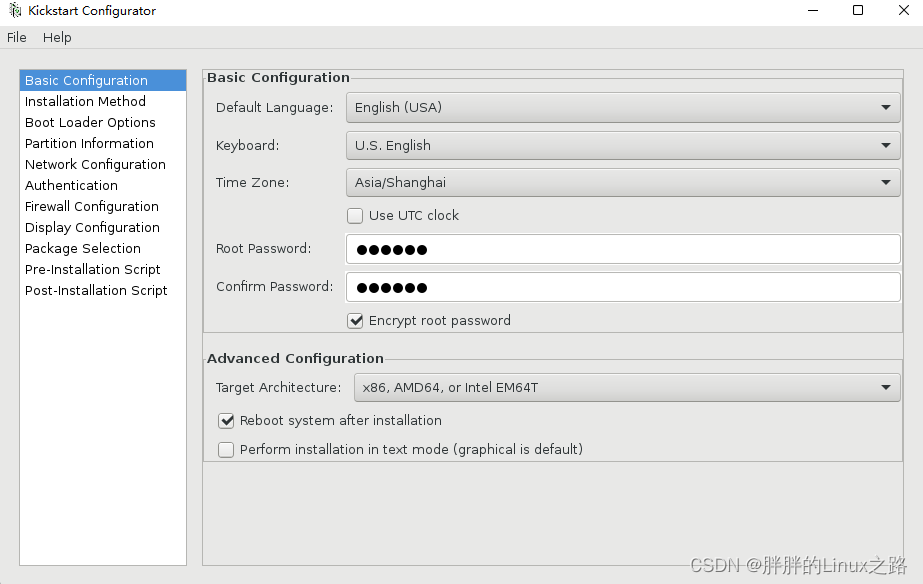
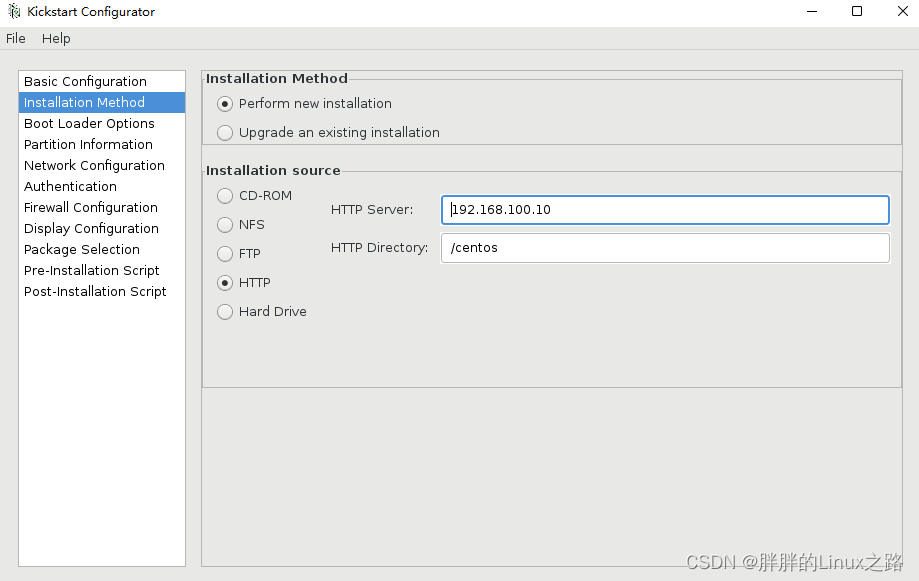
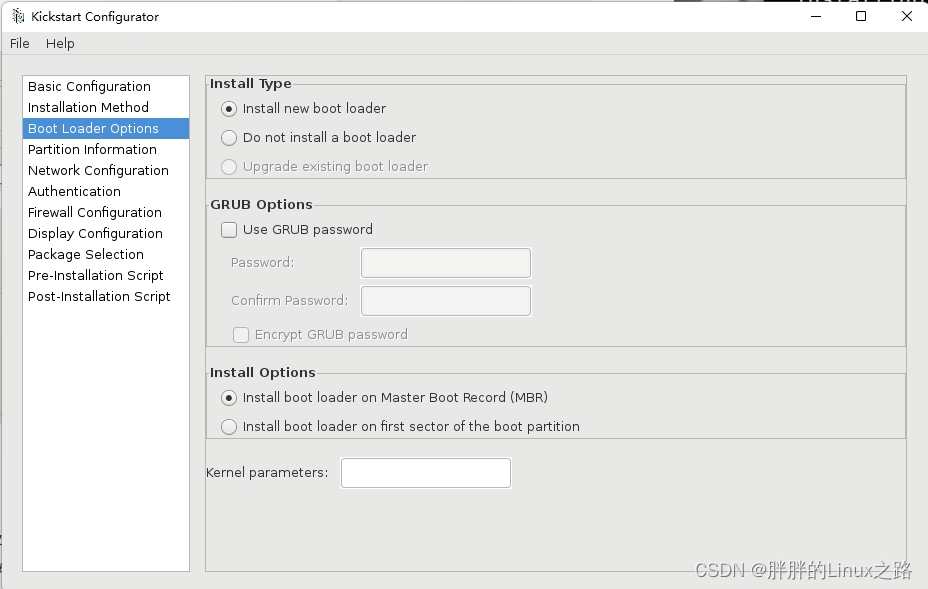
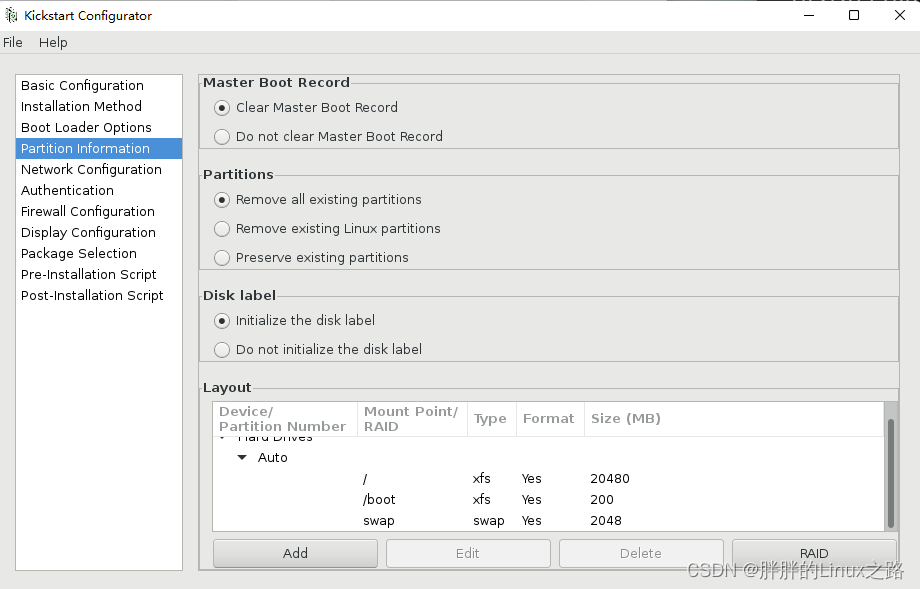
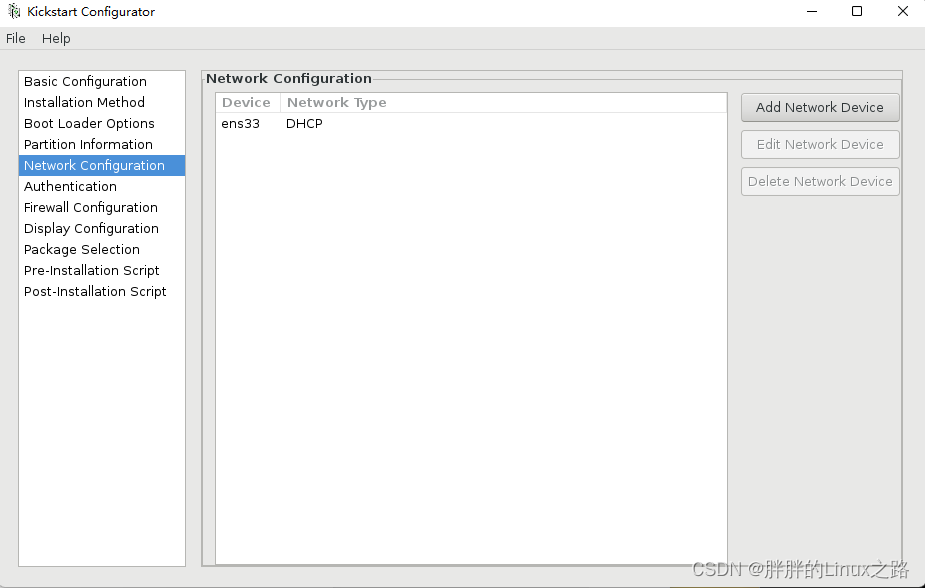
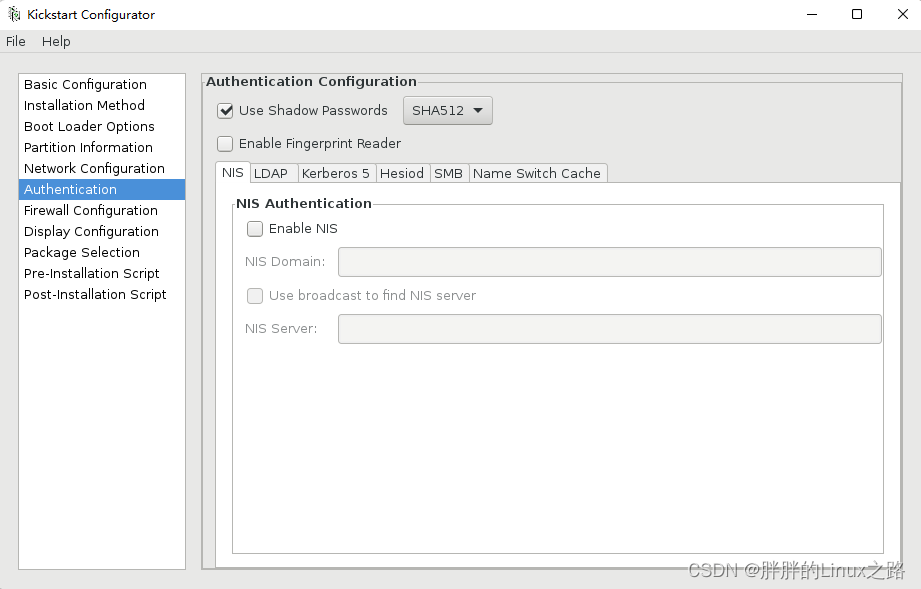
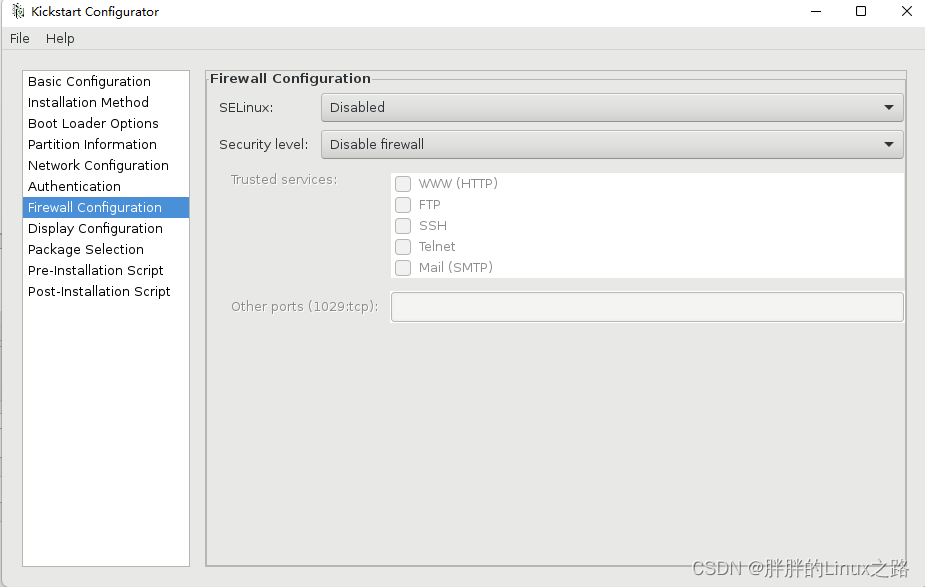
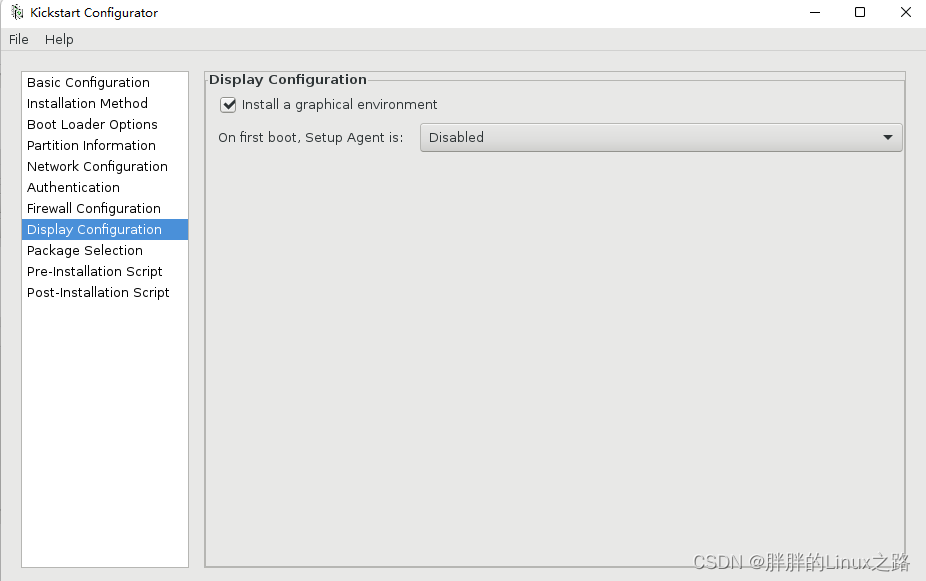
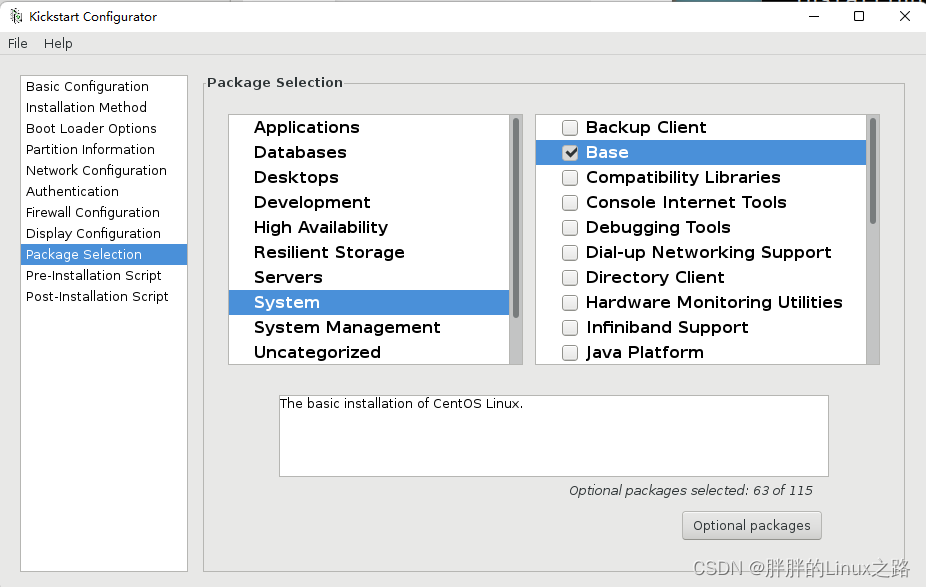
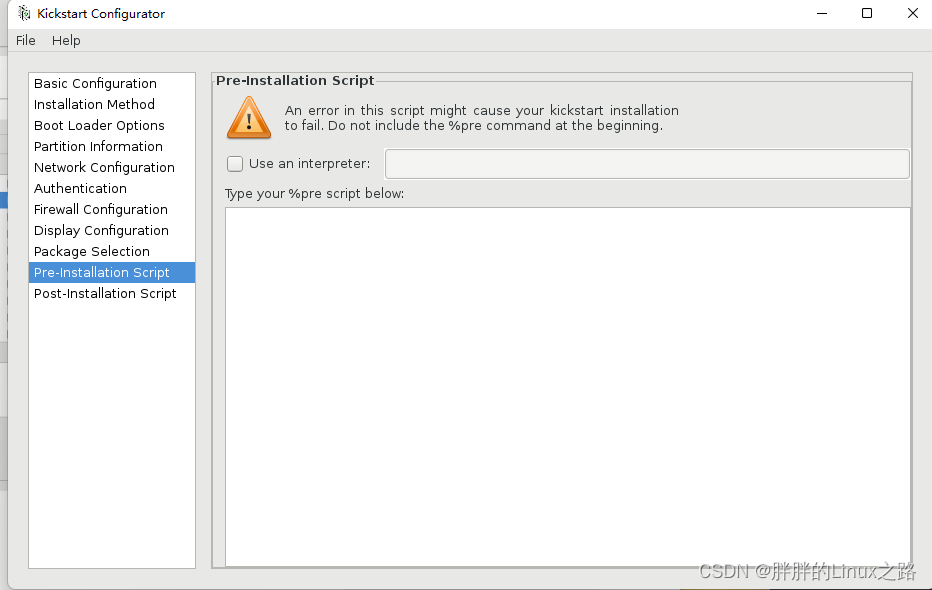
加载全部内容